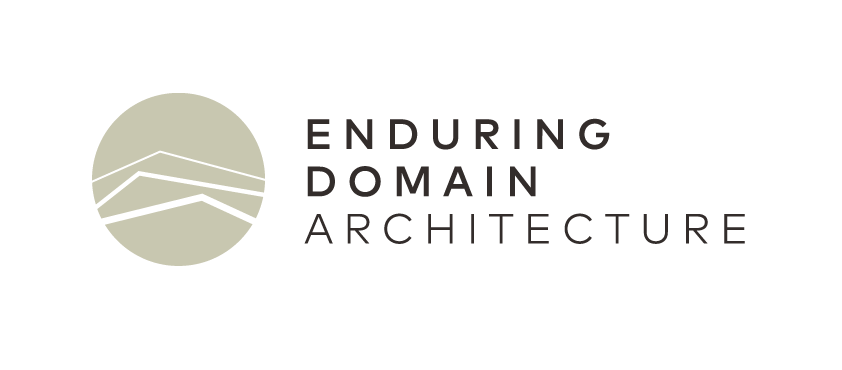Bringing your vision of a better home to life
To build truly sustainable, energy-efficient homes and reduce reliance on artificial systems, we go beyond just aesthetics to consider every aspect of your build — appropriate insulation, optimal house orientation for the climate, considered use of natural light, and methods for creating healthy indoor air quality. We prioritise self sufficiency by incorporating rainwater harvesting and solar energy into our designs.
By integrating sustainable design principles into every phase of the design and construction process, we ensure your house will have thermal comfort and low running costs year-round, as well as minimal environmental impact.
All of our projects start with a free consultation. After creating a brief, our fees are tailored so you only pay for what you need.
The architecture services we offer
- Any residential design, including new homes, alterations, renovations, and extensions.
- Small commercial and public building design.
- Affordable and sustainably designed off the plan home options.
- All standard architectural services, including site analysis, concept design, and construction documentation.
- Planning permits, Bushfire Attack Level (BAL) assessments, and energy analyses.
- Passive solar design, passive house design, net zero energy buildings, and climate responsive design.
- Consultation services for other builders, architects, and designers.
Why work with us on your home design?
Working with a qualified sustainable architect takes the stress out of building and renovating, and guarantees your vision is prioritised with every detail considered.
We provide clear and accurate 2D and 3D presentations throughout the project that help you visualise the progress. Each step of the design process is presented to you, so there will always be opportunities for feedback and collaboration.
We prioritise the energy efficiency of our builds by running thermal performance simulations during the design process that help you make informed and cost-effective decisions, ensuring your building performs at its best. We use the latest 3D modelling technology to create detailed and interactive presentations, including photo-realistic renders, virtual walkthroughs, and animations.
Creswick Courtyard
Frequently asked questions
I already have a builder that provides drafting services. Why do I need an architect?
Engaging an architect as a stand-alone service is a great way to ensure you are getting exactly what you want when building a custom home. Builder-led design may be biased towards doing things in a convenient way for the builder, and may not give you the same design freedom as a ‘blank page’ approach that comes with working with an architect.
Also, I assume you are looking at this page because you are interested in sustainable and energy-efficient homes. This is a specialist field, and a high-performance building is a result of experience and purposeful decisions throughout the design and documentation process.
In the end, it’s about choosing the right service provider for the right job.
What is the difference between Passive solar and Passive House?
I’m glad you asked. The two terms are very similar and are being bandied about a lot lately but there are distinct differences.
Passive solar is a design principle used to keep a home warm in winter and cool in summer. Winter sunlight is captured through north-facing windows, which is then stored as heat energy within thermal mass inside the home. The house is well insulated but not airtight. During winter, the building itself warms up and creates a thermal lag to keep the inside temperature steady throughout the seasons. The occupants can control fresh air and ventilation by opening well-placed windows.
In summer when the sun is high, fixed window shading will exclude the sun from entering the home and prevent it from overheating. The thermal mass inside will capture any latent heat and dissipate it into the ground beneath.
Passive House is a branded method of design and construction which originates from the cold climates of Germany, and has spread worldwide as a regimented performance specification. It employs all the design principles of ‘passive solar’ with the key difference being it must have very high air-tightness. To achieve this, it requires an active ventilation system which can recover heat while continuously delivering fresh filtered air into the home and exhausting stale and moist air.
The ‘active’ ventilation system of a Passive House generally produces a much lower moisture content which virtually eliminates the formation of condensation and mould. A Passive solar home can do the same thing, but relies on the occupants to regularly ventilate the home by opening doors and windows.
Both systems, if executed correctly, can produce very low energy homes with healthy indoor air quality and with reduced energy usage and need for mechanical heating and cooling.
Construction systems using natural materials, such as strawbale and hempcrete, lend themselves very well to passive solar design as the straw or hemp, together with the render, are vapour permeable and can naturally moderate humidity levels and mitigate condensation. Passive House homes are generally constructed with thick timber frames and use continuous membranes to control moisture and air movement.
At Enduring Domain we can design either type of system for you.
What will my building cost?
We aim to design to meet your budget. At the very beginning of the project we take into consideration all other costs that may be associated in procuring your building so that we have a realistic total project figure.
Size will have the biggest impact on the cost of a building, so we initially try to match up your brief with the building budget and determine a maximum floor area to stick to, as well as get an idea of how complex or simple to construct the design may be. Besides size, your selection of materials, fixtures, and fittings can vary the total build cost. You can decide where you want to prioritise the spend: do you want the biggest building you can afford with simple joinery, or do you want the most comfortable and energy-efficient building you can afford with high quality details, and only the space that you really need?
How long will the design process take?
The design process is collaborative, so this really depends on the project. After preparing an initial concept design based on your brief, you’ll have the opportunity to take as much time as you like to provide feedback as we go into more detail in the design phase.
If a planning permit is needed, expect it to take up to six months until we can start getting quotes from builders.
What happens at the consultation? How do we get started?
After you contact us, we organise a free consultation. In this meeting, we’ll go through your priorities for the new build or renovation, your budget, and your current needs, as well as long-term aspirations for your house.
We’ll also ask you to fill out a detailed brief for what your needs are and what scope of help you’d like from us. With this information, we can prepare a detailed fee proposal.
The best place to start is with a phone call or email with a brief introduction, after which we’ll organise an in-person meeting or video call depending on your location. We’ll also visit the building site prior to commencing design work to address the unique characteristics of your site from the beginning.



